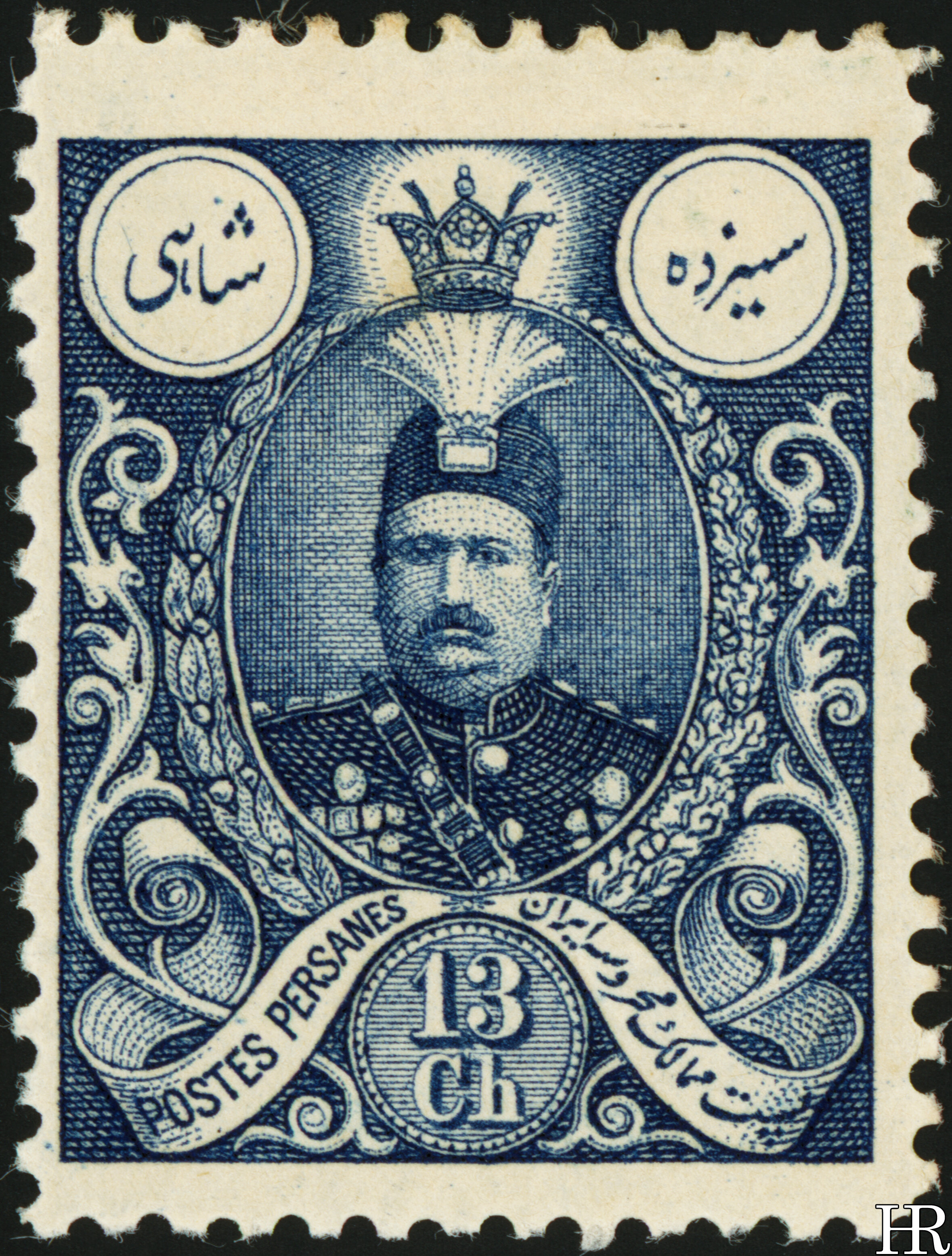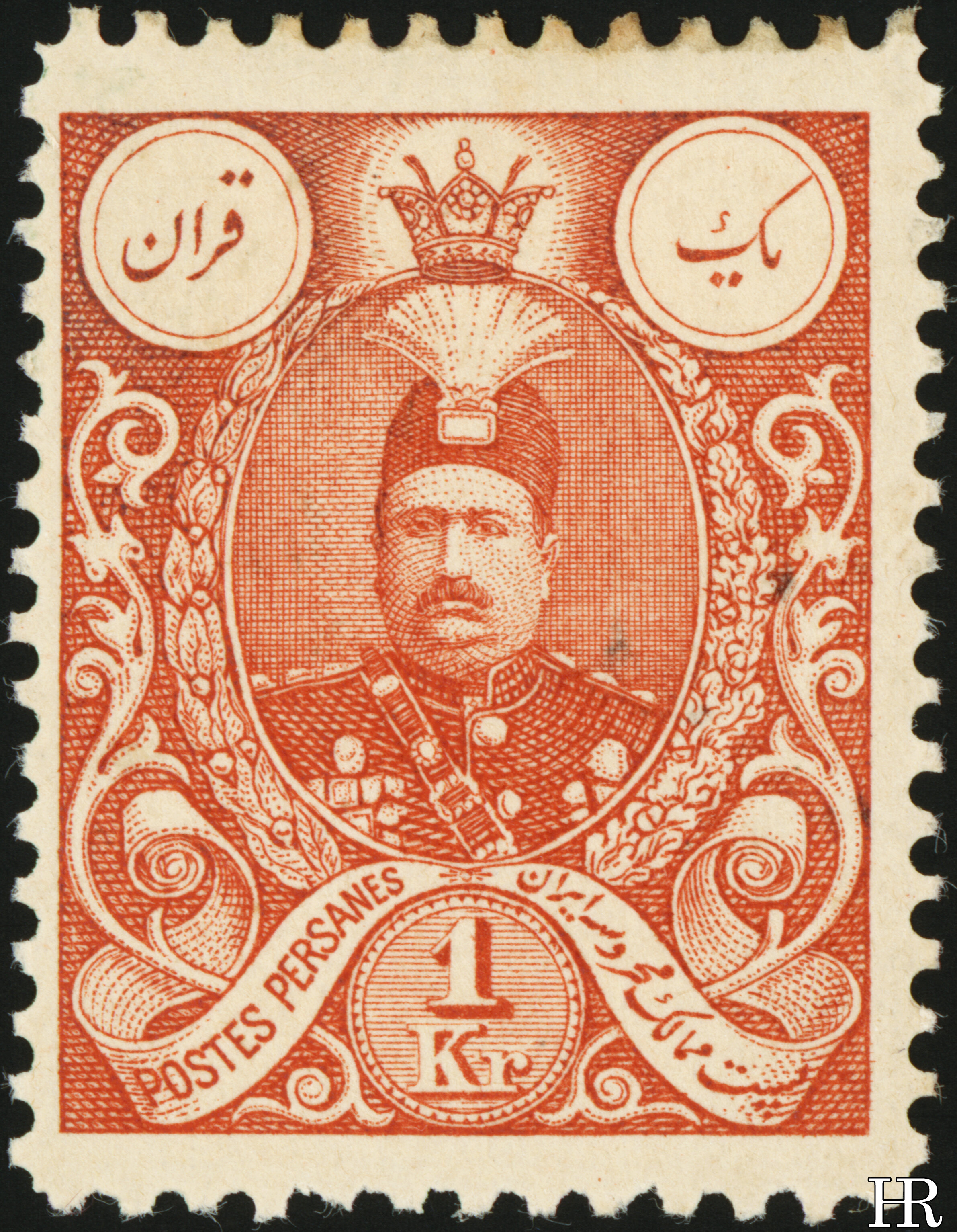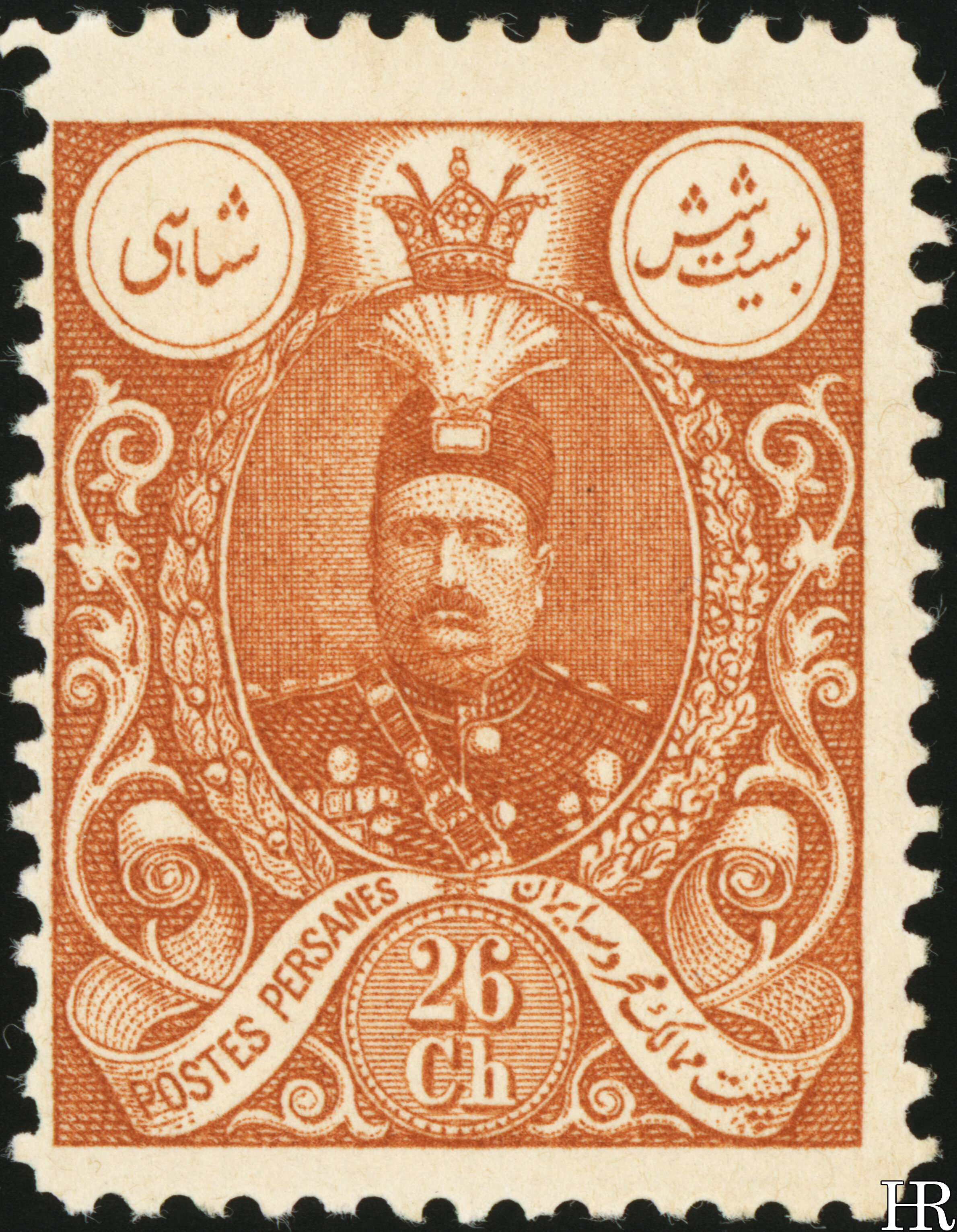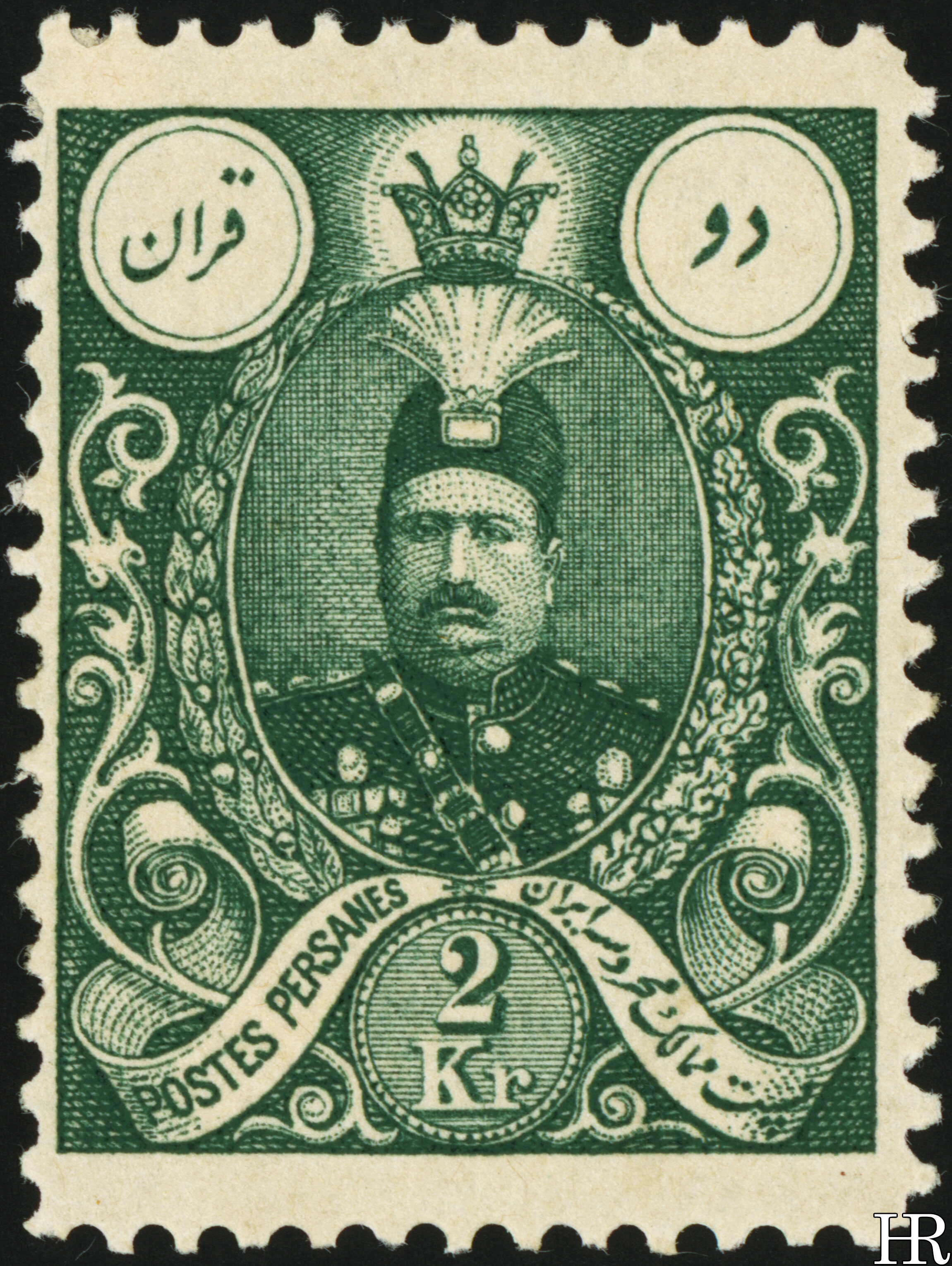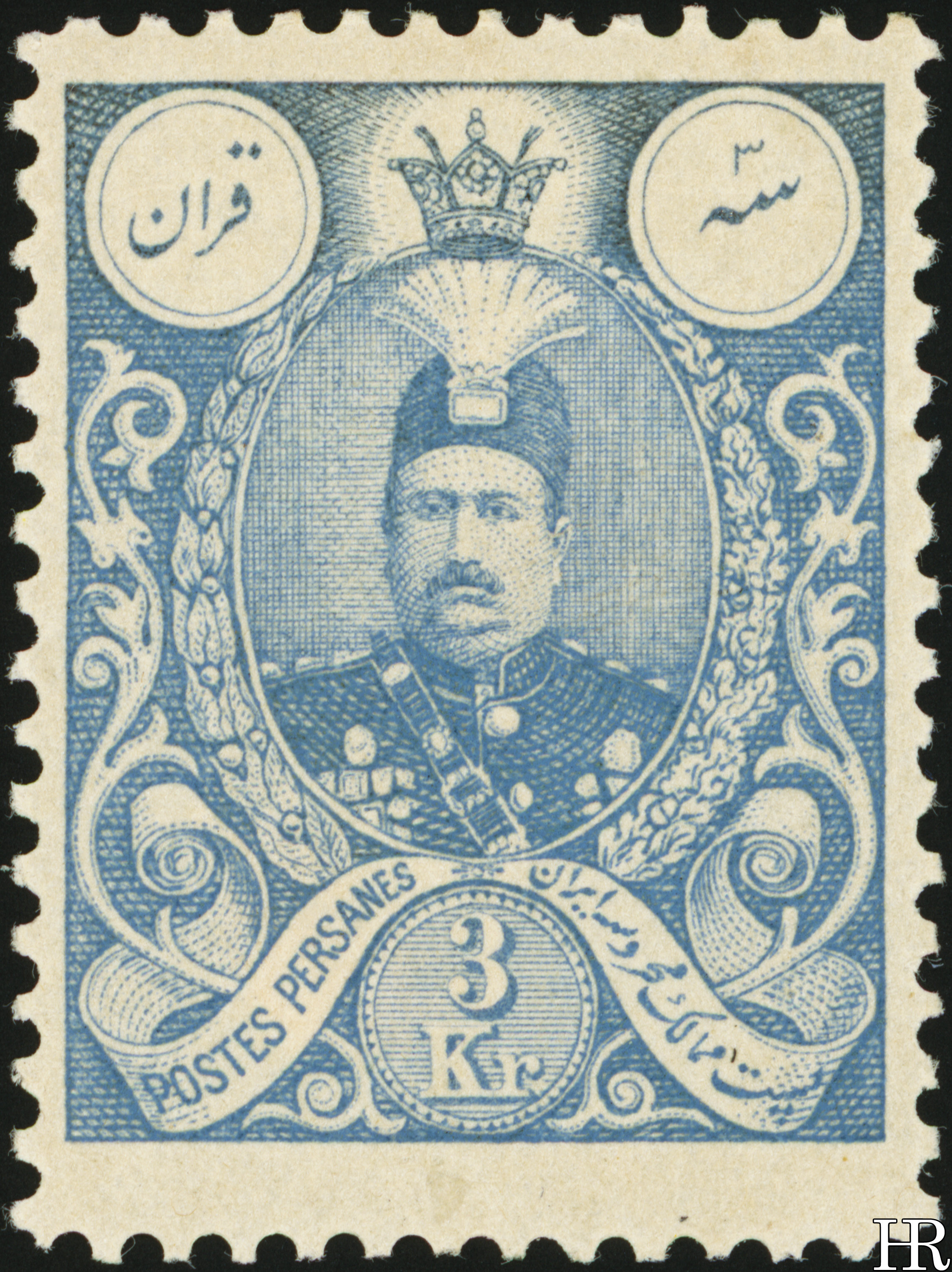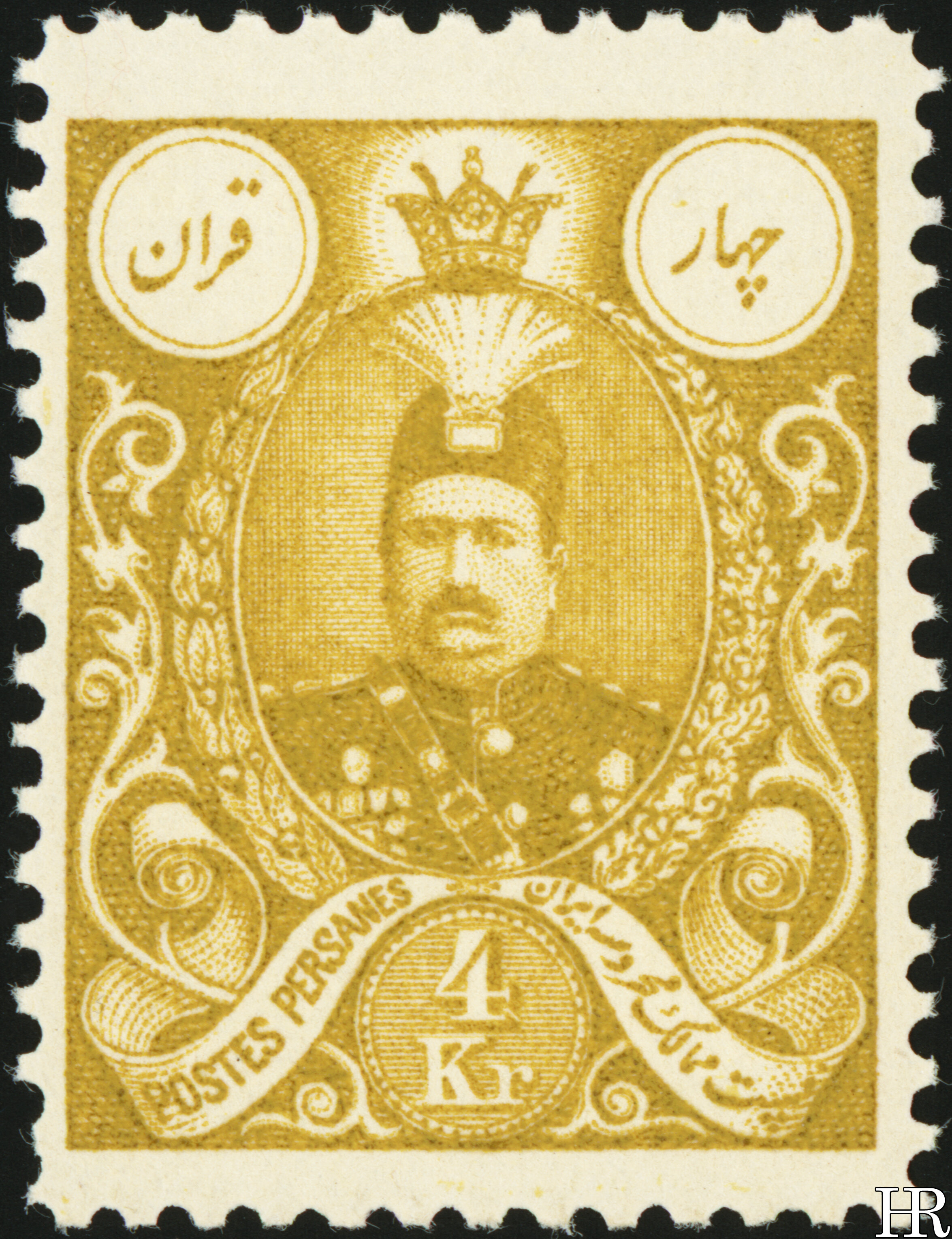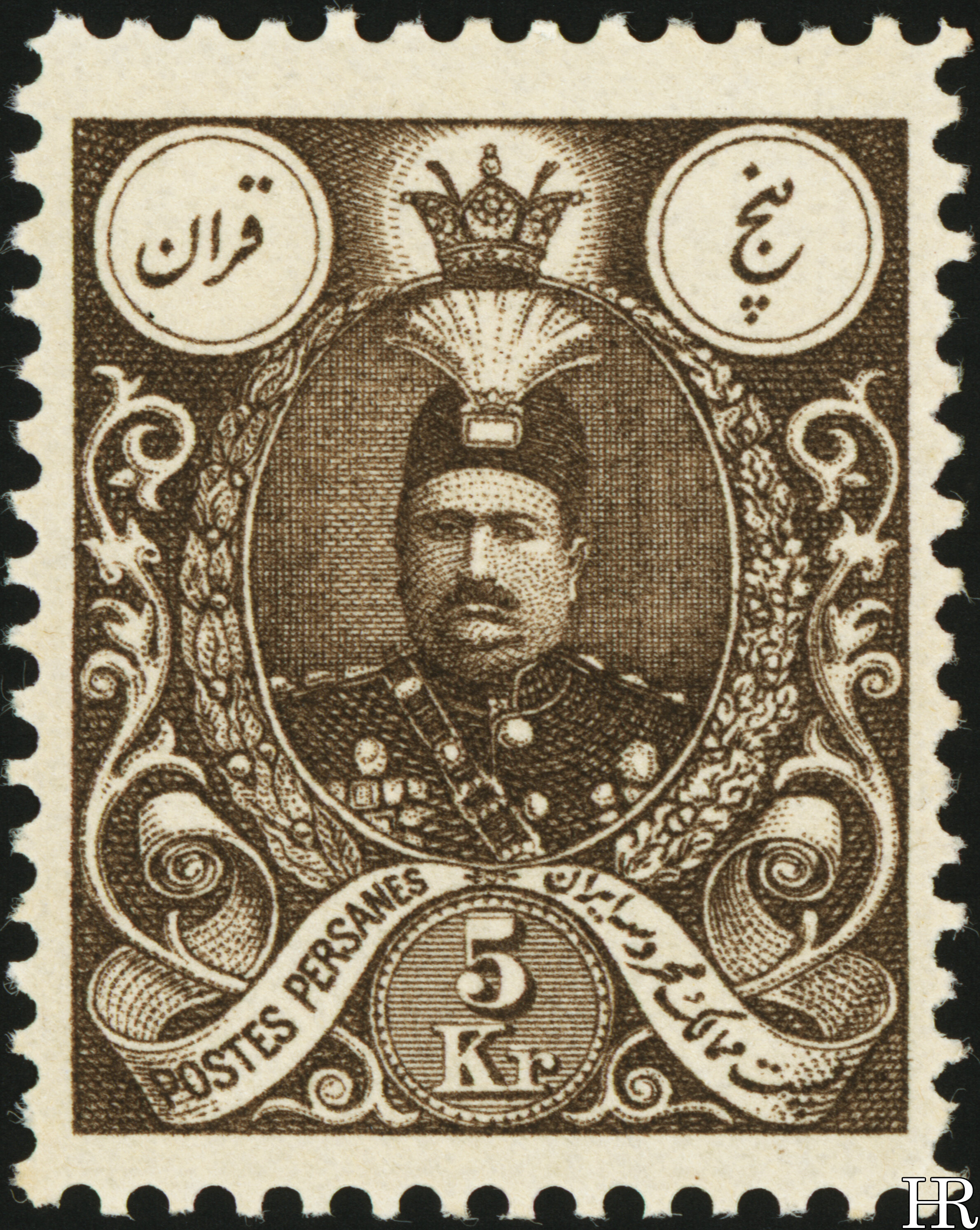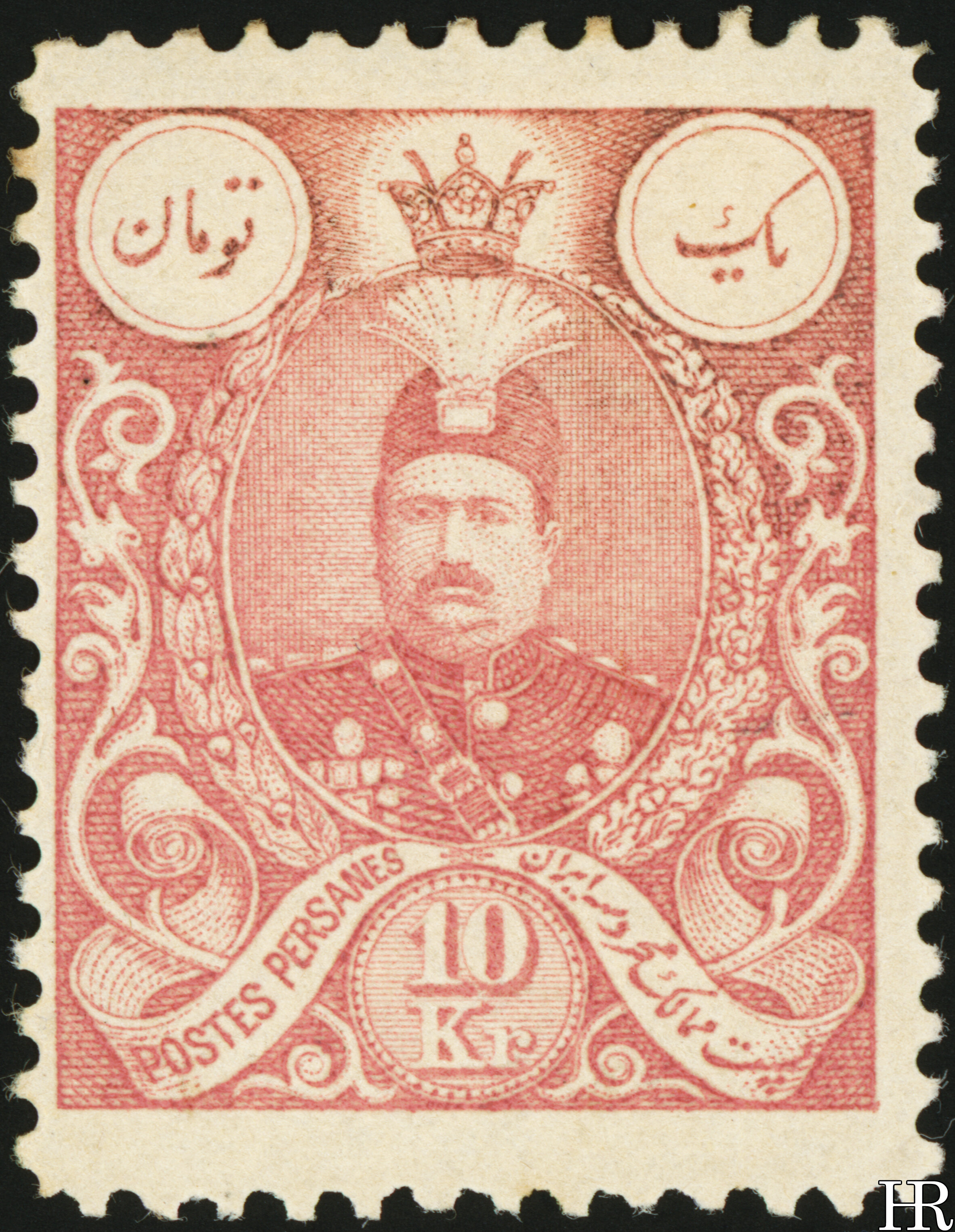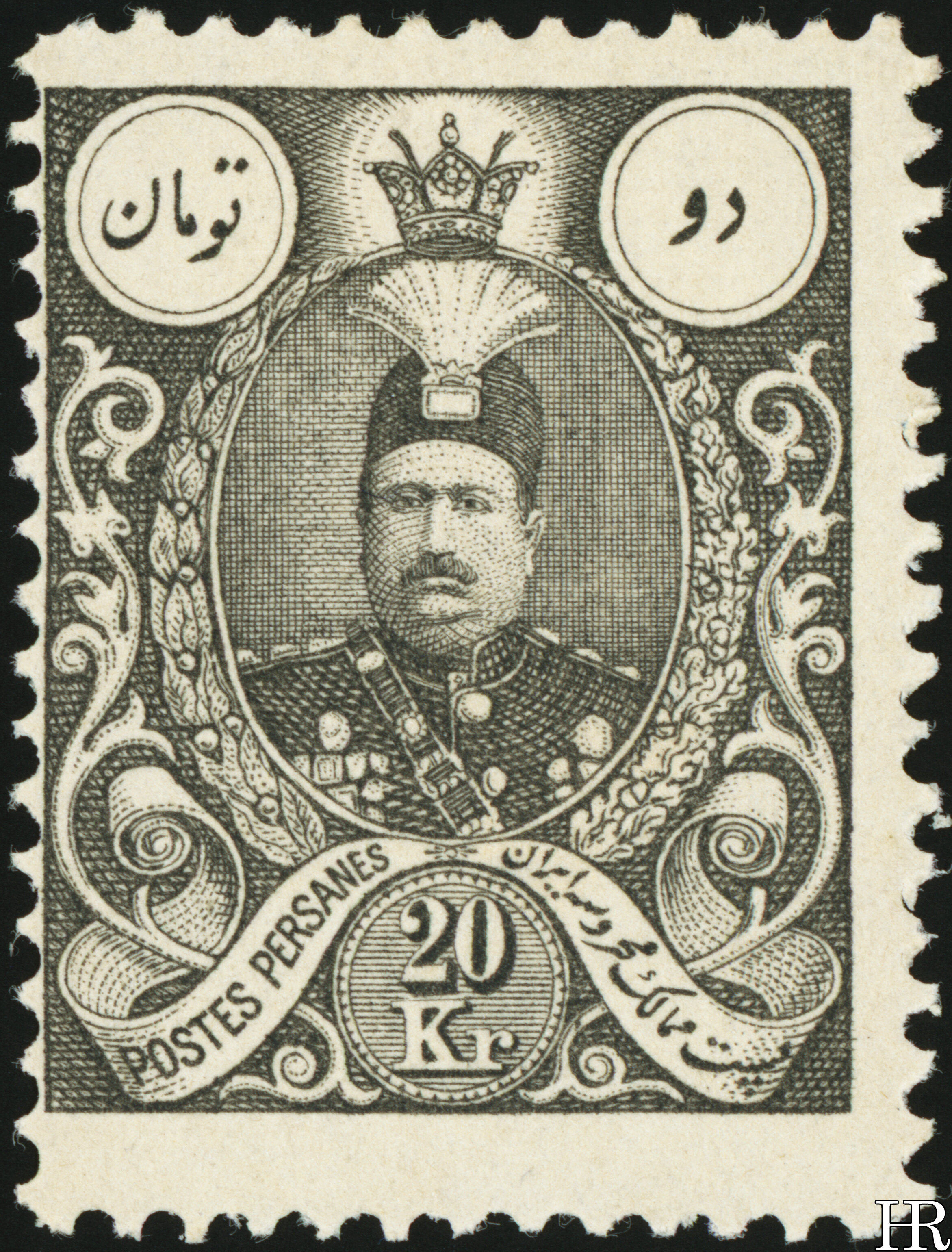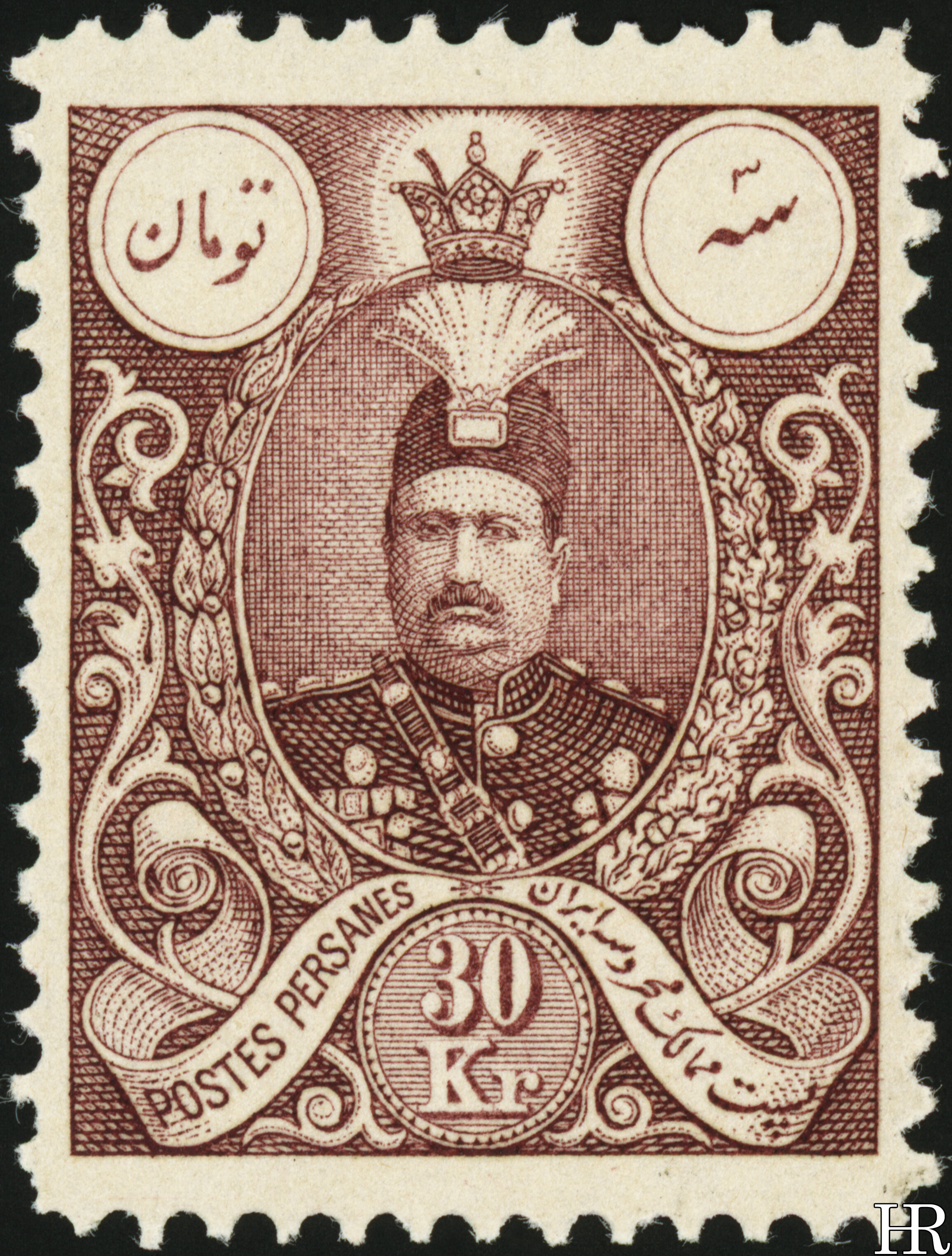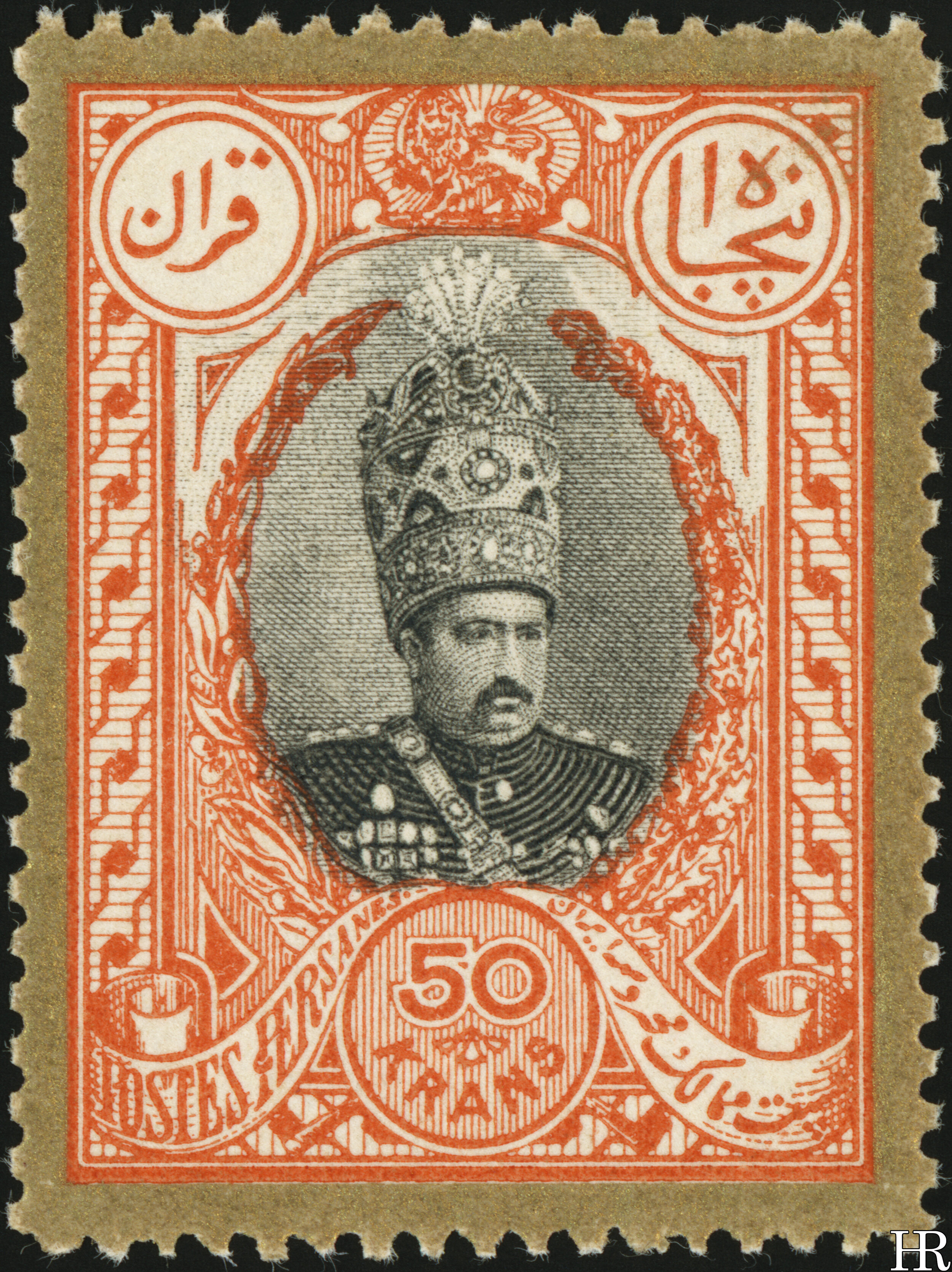Iran
Mohammad Ali Shah Qajar, 1907-1909
Currency: Iranian kran (20 chahis = 1 kran)
Production: J. Enschedé & Sons, Haarlem
First issued: 1907
First issued: 1909
A splendidly gargantuan set — a large man, depicted in large format, and certainly restraint wasn’t a priority for the designer as he deployed his arsenal of scrolls and crowns and foliage. The Observer Book of Postage Stamps maligned the Dutch designers of Iran’s issues for decadently “indulging their fantasies of the Arabesque” and, while that’s an entirely accurate description of what we see in front of us here, I think this is hardly a subject-matter which demands Machin-esque moderation.
The royal tiara — properly, the Kiani — has survived, and a rather lurid thing it is. (Wikipedia)
The Dutch, not a major player in the arena of stamp printing, had been producing issues for Iran for a couple of decades at this point. The stamp contract had gone to the J. Enschede printing house thanks to the lobbying of a Mr Knobel, the Dutch consul of the day.
Depicted is the ephemeral Shah Mohammad Ali Shah Qajar, who ruled Persia from 1907 to 1909. He tried to reverse the vaguely liberal reforms of his father and got himself deposed for his pains. He died in obscurity, in Italy, in 1925. He was succeeded by his son, who reigned longer but with no better outcome. His portrait here is strikingly unflattering — the heavily bejewelled uniform, a chin drooping over his right collar — but it seems to be an accurate reflection of the man as he appeared. The frames of the lower values are attractive but deteriorate a little on closer inspection. The oak and laurel branches around the portrait, although entirely conventional in a European context, presumably meant rather little to the average Iranian, and the arabesques, while modelled well, are obvious space-fillers and create an odd multiplication of foliage. But, all that said, the portrait hardly demands a subtle framing. The frame of the 50 krans is even more space-fillery, and less successfully so, but nice to see the lion-and-sun making an appearance. More subjectively, I have a marked dislike for text which gets smaller as it moves “away from the camera” so to speak — the effect is rather mild on the lower values but pronounced, unfortunately, on the 50 krans.
These stamps are invariably described as recess-printed but, on close inspection, they seem in fact to have been typographed, with considerable finesse. The 50 krans, like the royal tiara depicted on it, is an elaborate construction. The border is shiny gold ink, which unfortunately doesn’t react well to scanning — under natural light it’s less murky. The red area is, for some reason, lithographed, and the portrait is typeset as per the others.
This is a common enough set postmarked — after the Shah’s overthrow the remainders seem to have been cancelled to order and released onto the market. Unused is less common. The rarest value is, by some margin, the yellow 4 krans. This is a highly unsatisfactory colour, as can be readily seen (the “photo negative” effect on the Shah’s uniform is striking) — whether it was replaced by the yellow-olive shade, or it represents a failed attempt at producing the yellow-olive shade, I do not know.
I should, of course, note that this isn’t the complete set — this is all the portrait stamps, but simultaneous with these six lower values with a garish lion-and-sun design were also released. I don’t have these at time of writing — they’re in that awkward area of being cheap but not common. Will add them when I have them, but I didn’t think my not having them was enough of a reason not to write up the higher values.
08/05/2021

